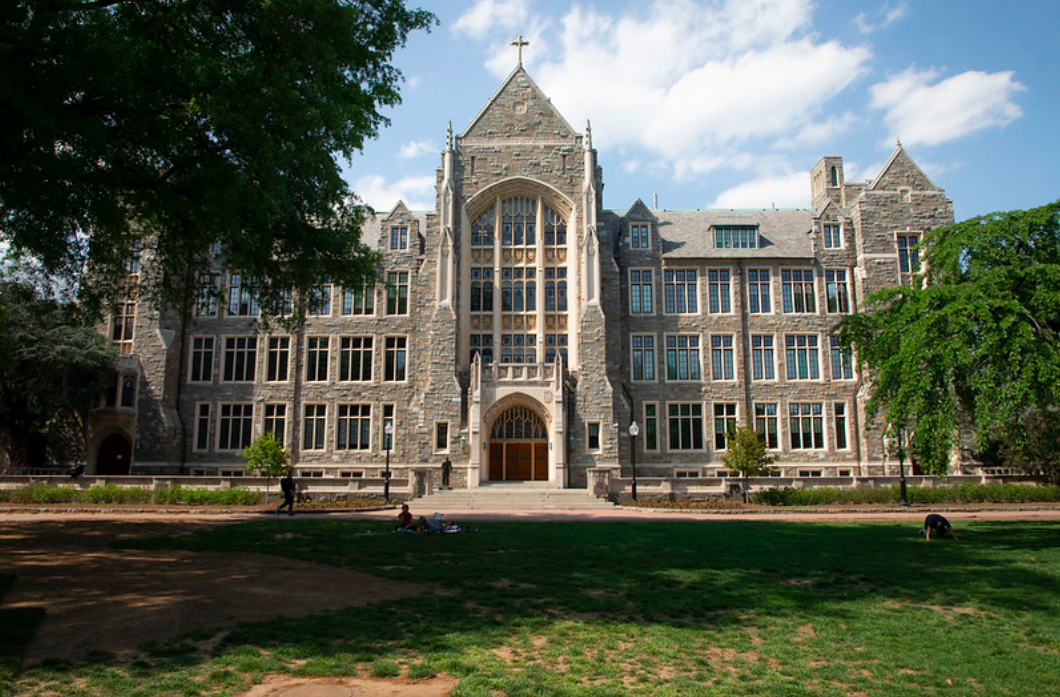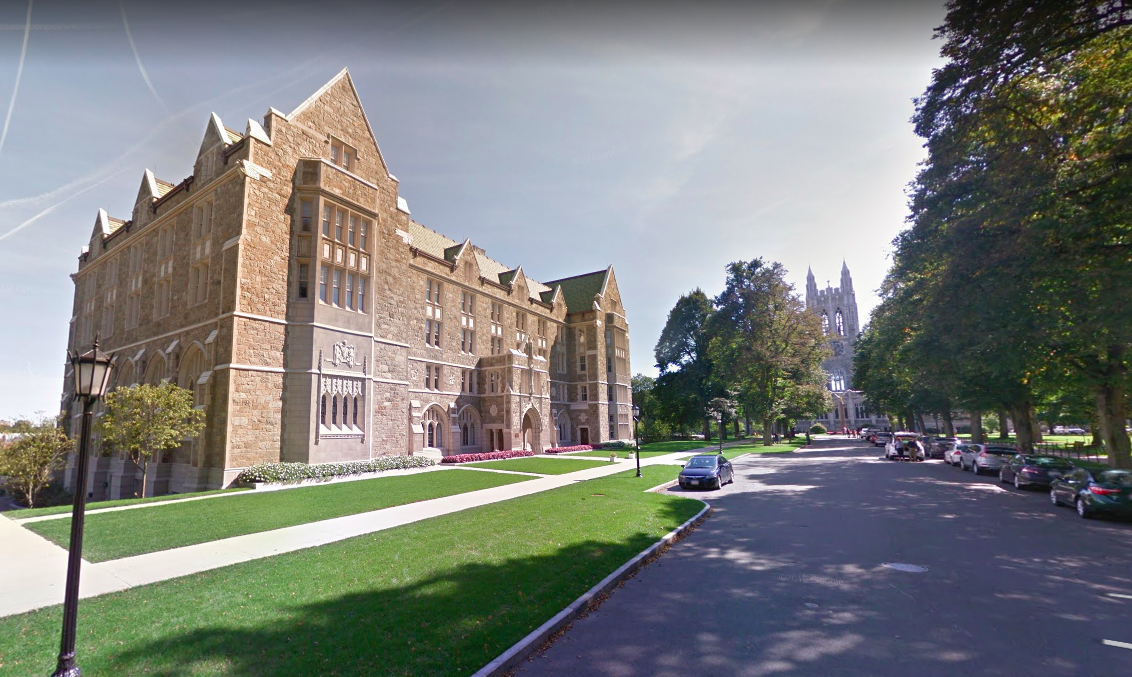Far too many students don’t have anything worthwhile to say in their conclusions to application essays about why they want to attend a particular college or university. If you are completely out of ideas, it’s always a good idea to express appreciation at the end of your college-specific essays.
Don’t start college in 2020
Colleges will try their best to get first-year students enrolled for Fall 2020, but really there are few compelling reasons to start college in 2020. Save yourself the time, money, and aggravation and take (at least) the 2020-2021 school year off from attending college.
Accepted to a top college but short on money? What now?

The average annual tuition at America’s most selective colleges and universities is over $50,000, and some schools cost $75,000/year or higher when you’ve factored in the cost of living. While attending a top college can open doors, introduce you to the right people, and help start your career on the right foot, it can also have serious long-term consequences for your finances.
What You Need To Know Before You Start
In order to maximize your time in one of the most sought-after colleges or universities in the country, you’ll want to make sure your finances don’t slow you down. Here are some pointers:
1. Narrow Down Your School List Early
Preparation is the best ways to ensure your success during the college admissions process, in college, and beyond. Knowing which schools you want to apply to allows you to prepare your course load and project your finances during your your undergraduate career and afterward.
If you’re still in high school, at minimum, make sure you talk to your school’s guidance counselors early and often. If you are returning to school as a mature student, seek out the opinions and perspectives of co-workers or friends. No matter your age, it’s also wise to consult with an expert to help chart your own unique course. You would be surprised how many connections you already have to help you navigate the admissions process, secure interviews, and get the right references.
2. Think Seriously About Where You Want To Live
Campus living is among the most expensive parts of college life. As handy as being on campus is for socializing, special events and networking opportunities, it can burn a hole in your pocket. The biggest perk is that living off-campus with a roommate can save you money.
3. Talk To The College About Your Financial Situation
Many top colleges and universities offer need-based and merit-based financial aid and are specifically looking for a more diverse student body. If you are in a low-income situation, a mature student, or belong to certain minority groups, you may be eligible for some of these scholarships, bursaries, or other financial aid.
Many students can wind up paying tuition at a steeply discounted price. In fact, the average tuition fee a student actually pays is around 49% of the advertised tuition price.
If you plan to apply to a very selective college or university, contact it immediately to see what is available before you apply.
4. Fill Out Scholarship Applications – All of Them
Conservative estimates put the dollar amount of unclaimed scholarship somewhere in the hundreds of thousands. Aside from contacting the school for their aid and scholarship requirements, check out online spaces and admissions services and scholarship search engines to help you find other scholarships.
5. Talk To Your Financial Institution
Student finances go beyond student loans and scholarships. Talk to your bank about a student bank account and student lines of credit. A student bank account can provide a better rate for your banking services, and may be able to provide cashback for your day-to-day spending.
A student line of credit can also help you start out with healthier credit before you pay back your student loans. It can also help ease the strain of your budget, by providing you with extra cash where and when you need it.
How To Earn Money While At School
Having a solid financial plan when you apply is a good start but how do you ensure you stay in the black when you’re finally at the school of your dreams? Thanks to the internet, there are a surprising number of ways to earn while studying. These are just a few.
1. Part-Time Jobs and Paid Internships
This is the first, and most obvious. Plenty of jobs and opportunities are available on- or off-campus. If your grades are good enough, you may even get the opportunity to shadow or assist a professor, which is not only good for your bank account but looks great on your resume.
2. Tutoring
Check with your school’s tutoring policies. If you can keep your grades up to scholarship level, you may be able to qualify as a tutor. Also, your placement at a highly selective college or university alone may make you a sought after tutor for high school students in the community or online.
3. Content Creation
We’re living in an era where content is king. If you’re a decent writer, and you have some downtime, you can position yourself as a freelance content creator. All that’s really needed is basic proficiency in writing, and some basic research and communication skills. Knowing a few basic concepts in marketing would also help but is not required.
You can earn a decent weekly pay from freelance sites and article writing services, and if you have the time and dedication, you can even start your own blog. A successful blog monetized with ads and affiliate sites can earn you passive income.
4. Freelance Artist
If you have talent in the arts, freelance sites have more to offer than simple content creation. You can find jobs from digital design, photography, video editing, and even voice acting work. Freelancing means you can set your own hours, and indulge your creative side between classes.
5. Remote Call Centre
Remote call-center work is another great option for students. It’s easy to set up at home, with just a private line and a hands-free microphone headset. Jobs are available online directly through the companies or third-party job board sites.
Like content creation, these usually don’t require a rigorous screening. Most companies will provide any training you need, and you will be able to set your own hours. It’s important to note that you are expected to match their tech requirements. You will also be required to work a certain number of hours each week. However, remote call centers and data entry jobs do pay better than freelance in most cases.
—
A selective education doesn’t come cheap. With the right preparation, a good support system, and a lot of hard work, you’ll be able to get the full experience and still take care of your bills.
Pandemic Response Puts Many Colleges in Peril

The Coronavirus Pandemic has dramatically reshaped the college admissions landscape in just a matter of weeks. While many colleges are attempting to present a united front of care and concern for future applicants by going SAT- and ACT-optional for the high school Class of 2021, what’s really happening is this: colleges’ survival instincts are pushing them to do what they feel they must in order to make it through in one piece what is likely to be a 2020-2021 college admissions cycle unlike any other before it.
The pandemic has killed thousands, but the decision by political leaders to shut down economies has led to the loss of nearly twenty-five million U.S. jobs as of this article’s publication, and with them, many a nest egg to pay for college. Whole industries are in ruins, and job cuts and business failures are likely to continue through at least fall.
Colleges are businesses. Most colleges depend on tuition dollars paid by families and subsidized by the federal government to survive. If too few applicants apply and ultimately matriculate, colleges crumble. That’s why many American colleges are so rapidly going test-optional. They fear for their very survival if they don’t. And we’re not just talking about the obscure colleges in rural locales that were late to go-test optional out of habit. We are talking about the biggest names in American liberal arts education. Amherst, Williams, Pomona, Scripps. All are in grave danger in an economy unable to produce jobs or produce the income necessary to support the luxury of liberal arts degrees. The powers that be at Case Western and the UCs wanted to go test-optional before the pandemic and used it as an excuse to do so. Tufts must fear that being so many students’ second choice will not suffice in the choppy waters that will define the dog-eat-dog 2020-2021 admission cycle.
With the situation is so critical you can bet that talk of a bailout for colleges is drawing near. If a bailout is good enough for Boeing and Delta, college presidents will argue it’s an absolute must for them too. Even Harvard – with an endowment larger than the wealth that exists in many countries – is cost cutting savagely. Many colleges will likely shut down in the months ahead if the likes of TUFTS are suddenly test optional and MIT refuses to look at Subject Test Scores even as ACT, Inc. and College Board hurriedly try to produce at-home tests. Buckle up, you’ve never seen what’s coming.
Here is a list of colleges, as of this article’s publication, that have gone ACT- and SAT-Optional within just the last month:
Amherst College
Anderson University
Babson University
Barry University
Boston University
Butler University
California Lutheran University
Centre College
Chestnut Hill College
Clarkson University
Coastal Carolina University
Colgate University
College of Wooster
Concordia University Texas
Davidson College
Drury University
Gonzaga University
Hamilton College
Haverford College
Loyola Marymount University
Middlebury College
Montana State University
Murray State University (for high school applicants with 3.0 GPAs)
Neumann University (as long as applicants have a 2.5 GPA)
Northeastern University
Pomona College
Portland State University
Purdue University Northwest
Rhodes College
St. Edwards University (TX)
St. Olaf College
Santa Clara University
Scripps College
Seattle University
Shenandoah University
Swarthmore College
Texas Christian University
Trinity University (TX)
Tufts University
Tulane University
University of California Berkeley
University of California Davis
University of California Irvine
University of California Los Angeles
University of California Merced
University of California Riverside
University of California San Diego
University of California Santa Barbara
University of California Santa Cruz
University of Maine System
University of the Cumberlands
University of Montana (for high school students meeting GPA requirements)
University of Oregon
University of Washington
Vassar College
Virginia Tech
Western Michigan University
William Woods University
Williams College
With admissions standards being lowered by the day, remember to keep checking ConvertYourScore.org for the latest information about which colleges require or recommend which tests.
ConvertYourScore.org is the Internet’s most valuable ACT-SAT score conversion and information supersite. The regular updates to ConvertYourScore.org allow students and parents to plan better than ever before when or if to take the ACT, SAT, and SAT Subject Tests.
ConvertYourScore.org not only gives students the opportunity to compare their SAT and ACT scores just like college admissions officers do when evaluating applications; it also gives students the knowledge they need in order to determine which remaining test(s) may be worth taking in order to meet their college admissions potential.
ConvertYourScore.org has always helped:
- students who have only received SAT scores to convert their SAT scores into comparable ACT scores.
- students who have only received ACT scores to convert their ACT scores into comparable SAT scores.
- students who have received scores for both the SAT and ACT to definitively determine which test they did best on – ensuring that students only send to colleges the scores that put them in the best light the eyes of admissions officers.
In addition, ConvertYourScore.org
Best of all, ConvertYourScore.org has always been completely FREE and requires no sign in process. The one-page site is the Internet’s best one-stop destination for ACT and SAT information and advice.
Yet, the site’s latest updates also allow students and parents to:
- determine which colleges and universities require or recommend their applicants take the optional SAT Essay section and/or the optional ACT Writing section (only a handful of colleges still do).
- determine which colleges and universities recommend or favorably consider submission of strong SAT Subject Test scores as a part of their college applications.
- determine which four-year colleges and universities in the United States are test optional in the admissions process, test flexible in the admissions process, or test optional for those students who rank in the top ten or top eight percent of their high school classes
ConvertYourScore.org is better than ever! No student or parent should start down the path of ACT or SAT planning or testing without first visiting and digesting all the information on ConvertYourScore.org.

Making a Calm College Decision

This is typically the week many high school seniors are a little tense about their college plans. The last few colleges are sending out decisions this week, and they tend to be the colleges where the admit rates are a little less than getting struck by lightning, so the hopes are high, while the odds remain low.
Now that the big week is finally here, here’s a quick list of things you should focus on to make a quality decision for life after high school:
What you do with the college experience matters more than where you go. Most counselors save this advice for the end of articles like this, but these are unusual times. Chances are, if you’ve applied to a highly selective school, you have what it takes to do well there—it’s just that the college runs out of room before they run out of great applicants. This means that the talents, habits, interests, and way you look at the world has prepared you to do great things wherever you go. The college you attend won’t automatically make you a success; that will still be up to you. So your future will still be in your hands, no matter what the colleges have to say this week.
It looks like another record breaking year. There are fewer students graduating from high school this year, but that isn’t keeping many colleges from seeing new highs in applications—and some that are seeing declines are still admitting less than 20 percent of their applicants. Combined with an increase in the number of students many colleges took through early action and early decision plans, that leaves precious few seats to give out this week.
Yes, No, or Maybe, read the entire letter. A student I am close to—OK, it’s my son—was so happy to read he was admitted to his first choice school he didn’t bother to read page 2 of the acceptance letter. I did, and it’s a good thing, since it included information on the merit scholarship that made his attendance their possible. Other yes letters have information about when deposits are due, and those are important as well.
Letters that waitlist you are even more important to read, since staying on the list may require you to do something—email, send back a card, update your application—by a specific date. Even the letters of denial could give you information about transfer options that may now come into play. So read the letter from start to finish, and have a parent do the same.
Read, and update, your financial aid information. There’s a good chance all your colleges are going to be sending financial aid packages this week. These are based on the financial aid information you gave them two months ago, when the world was a quiet place, before the stock market lost 30 percent of its value—and possibly before you or your parents lost their job.
The only way a college will know your financial picture has changed is if you tell them, and this is college—so it’s not time to be shy. Pick up the phone, call financial aid, tell them your new story, and be ready to send supporting documents. You’re this close to making the dream real. Keep working.
File financial aid for the first time. It’s certainly true most colleges have given all their aid away to students who applied for it in February, but many of those students turn down packages, or go to a different school. If you now need help paying for college, get the forms in yesterday—check the college’s website to find out all the forms they need, and where you should send them. Calling to ask is an even better idea.
Ask for an extension to the May 1 deposit. Many colleges understand that this spring isn’t exactly normal, which is why they are moving their deposit deadlines to June 1 or later. If your college isn’t doing that, you can still call and request an extension for personal reasons. They might say no, but the only way they say yes is because you ask—kind of like the only way they admitted you is because you applied. Make. The. Call.
Apply to more colleges. Except for the Top 50, every college in this country is still taking applications for fall admission—and, as mentioned before, some will still have financial aid to offer you. If you’re looking at changing your college plans due to all the changes in the world, lots of colleges are eager to hear from you for the first time…
Consider transferring …and thanks to some pretty strong transfer options, you could still end up graduating from your dream school, even if you can’t start there. The best way to plan a transfer is to call the college where you want to finish, and ask about transfer options. Building the plan from the end means you know where to start, and what classes are best to take to minimize the credits you’ll lose when you make the shift. Ask for transfer admissions when you call.
Talk to your counselor. One upside of all of this is that counselors now have more time than ever to talk college with you, since they don’t have to do lunch duty. I know, I know—they have 8,000 students on their caseload, and they might not know you well. They will once you tell them who you are, and what you need—and that window is now more wide open than ever before. Most schools have sent students direction on how to reach out to counselors. As is the case with most things in life, what you do with that information is now up to you.
Georgetown’s 2020 School-Specific Acceptance Rates
 Georgetown University has released its school-by-school acceptance rates for students applying during the 2019-2020 admissions cycle for the D.C. university’s Class of 2024.
Georgetown University has released its school-by-school acceptance rates for students applying during the 2019-2020 admissions cycle for the D.C. university’s Class of 2024.
Georgetown continues to be one of the most proactively transparent universities when it comes to sharing both its overall acceptance rate and its acceptance rates broken down at the school level (Business, Foreign Service, Arts and Sciences, and Nursing). We wish more selective universities would follow Georgetown’s lead. Georgetown, of course, always has a lot of impressive statistics to share.
“This year, the Admissions Committee reviewed more than 21,300 applications and offered admission to 15% of these candidates. Because of the precautions against COVID-19 that we have been asked by the University to take, for the first time we are not sending decision letters in the mail. Admissions decisions were posted in the applicant portal on March 20. Students can view and print their decision letters from their applicant portals.” shared Charles A. Deacon, Georgetown University’s Dean of Undergraduate Admissions.
Deacon went on to add that financial aid decisions will be sent by the Office of Student Financial Services early this week and that candidates accepting a place on Georgetown’s Waiting List will be informed of their status by May 15. “As the Waiting List is not ranked in advance, it is not possible to offer an estimate of chances of admission.”

If you got into Georgetown this year, or any year for that matter, congratulations! Have you bought some Georgetown gear yet?
Of note, in just the past two years, the number of students who have applied to Georgetown College has dropped by 1,126 students, which represents the bulk in Georgetown’s overall drop in applicants over the past two years (which totals 1,579). While total applications are not where they were at their peak, Georgetown is still accepting students at roughly the same rate as it has in recent years. When reviewing the table below, do note that rows with an asterisk (*) are filled with statistics reflecting numbers applicable to admitted students only.
| Georgetown College |
Walsh School of Foreign Service |
McDonough School of Business | School of Nursing & Health Studies |
Total | |
|
Applied
|
12,683 | 4,027 | 3,219 | 1,389 | 21,318 |
|
Admitted
|
1,950 | 590 | 543 | 226 | 3,309 |
| Admission Rate | 15% | 15% | 17% | 16% | 15% |
| *Mean Class Rank Percentile | 94.5% | 95.4% | 93.3% | 95.0% | 94.5% |
|
*Middle 50%
SAT EBRW |
710-770 | 730-770 | 690-760 | 700-770 | 710-770 |
|
*Middle 50%
SAT Math |
710-790 | 730-790 | 730-800 | 710-790 | 720-790 |
| *Middle 50% ACT Composite |
32-35 | 33-35 | 32-35 | 32-35 | 32-35 |
Recent Acceptance Rates of Candidates From the Waiting List
| 2019 | 2018 | 2017 | 2016 | 2015 | 2014 | 2013 | 2012 | |
| Georgetown College | 6% | None | 14% | 7% | 14% | 12% | 10% | 7% |
| McDonough School of Business | 3% | None | 3% | 1% | 4% | None | 6% | 10% |
| School of Nursing & Health Studies | 11% | 14% | 9% | 28% | 4% | 22% | None | 10% |
| Walsh School of Foreign Service | 3% | None | None | None | 17% | 13% | 8% | 6% |
Again, thanks for the transparency Georgetown. Hopefully the Class of 2024 will be able to start on campus safe and well in a few months.

The neighborhood around the university is usually bustling, but currently is boarding up because of the Coronavirus Pandemic.
MIT to no longer consider SAT Subject Test scores
 MIT has made the decision to no longer consider the SAT Subject Tests as part of the admissions process. You can find MIT’s full revised testing requirements here.
MIT has made the decision to no longer consider the SAT Subject Tests as part of the admissions process. You can find MIT’s full revised testing requirements here.
MIT states: “…in fairness to all applicants, we won’t consider them (Subject Tests) for anyone. We think it would be unfair to consider scores only from those who have scored well and therefore choose to send them to us. They are neither recommended nor optional; they are simply not a part of our process anymore.”
While the announcement comes as the Coronavirus spreads from China to all corners of the world, MIT claims the decision was not taken in response to the pandemic. Earlier this week, Case Western University used the pandemic as its excuse for going fully SAT-ACT optional for the high school class of 2021.
For a full list of colleges that currently require, recommend, or favorably consider SAT Subject Test scores, visit convertyourscore.org.
Case Western Goes Test Optional in Response to COVID-19
Never let a crisis go to waste is a maxim someone at Case Western University must deeply believe in, as the university’s admissions office announced today that it is now test-optional for students entering in the fall of 2021.
Case Western framed this admissions switcheroo in the context of the COVID-19 pandemic, which has forced the ACT and SAT to cancel spring test dates.
“We understand students’ concerns about completing Case Western Reserve’s standardized testing requirements for admission. In response, the university has approved a test-optional policy for students applying for the fall 2021 semester. In light of the unprecedented circumstances the COVID-19 pandemic has created, Case Western Reserve believes students’ best interests are served by an approach that assures them of our flexibility as they progress through the college search process.”
The university went on to add, “We will determine policies for future classes in winter 2020/21.”
Expect more colleges to do this. While clear-eyed people will find unsavory the trend of colleges wrapping self-interest-guided decisions in imitative altruism during a real crisis when so many real people are suffering and losing their jobs/incomes – and potentially their lives, college admissions deans and their overlords are focused on generating as many applications as possible no matter the calamity that surrounds them.

Whatever happened to unvarnished honesty, especially in a time of crisis? Case – and many other colleges – want as many applicants as they can muster from the high school class of 2021 in what is likely to be an admissions cycle characterized by “softer” demand than college administrators want to contemplate.
I’ll believe “students’ best interests are served” when these same institutions reduce the price of tuition and/or offer permanent full-time online degrees. We don’t even know if recently deposited students from the high school class of 2020 will be able to start their college experiences on campus in August. In the meantime, congrats to Case on the PR and aggressively-timed (why not announce this over the summer?) attempt to stabilize your finances for FY2021-2022.

Aerial view of Cleveland, Ohio, home to Case Western Reserve University
Boston College Regular Decision Acceptance Rate Now 22%
 Boston College will notify Regular Decision applicants of their admissions decisions via email on Thursday evening, March 19, 2020. Admitted students in the United States will be mailed acceptance packets in the days that follow. Admitted students with permanent addresses overseas, and those not earning admission, will receive email notifications only.
Boston College will notify Regular Decision applicants of their admissions decisions via email on Thursday evening, March 19, 2020. Admitted students in the United States will be mailed acceptance packets in the days that follow. Admitted students with permanent addresses overseas, and those not earning admission, will receive email notifications only.
Boston College had 1,325 spots to fill from a Regular Decision applicant pool of 26,700. To hit its enrollment goals, BC produced a Regular Decision acceptance rate of twenty-two percent. The mean composite SAT for Regular Decision admits was 1467 and the mean composite ACT score was 34. Admitted students come from forty-nine U.S. states and two US territories and seventy-eight different countries.
Overall, Boston College received roughly 29,400 applications for 2,325 openings in the Class of 2024. One thousand of these spaces were filled via Early Decision, which resulted in an ED admissions rate of thirty-seven percent. BC switched from Early Action to Early Decision during this admissions cycle. Last year, BC’s overall acceptance rate (when it offered EA and RD) was twenty-seven percent.
Meanwhile, BC will offer 6,500 students a spot on it waiting list, which the university acknowledges, “feels large;” yet, BC felt it “necessary given the many uncertainties facing society this year.”
How to Approach 2020-2021 Common App Essay Prompts
How do you tackle the main essay on the Common Application to give yourself the best shot of writing an essay that is acceptance worthy at even the most selective colleges and universities?
While your essay should be unique, your approach to writing a great essay should actually be both formulaic and geared towards differentiating your story and perspective on life from those of other applicants.
Students (and their parents) who are serious about figuring out which Common App essay prompt to pursue should take the time to watch the entire video below. In it, I walk you through each prompt that will appear on the “common” portion of the 2020-2021 Common App and give each a grade for the average and not so average Common App applicant. After you watch the video make sure to learn why you still may be having a hard time drafting anything other than bad or downright horrible responses. Enjoy!
- « Previous Page
- 1
- …
- 26
- 27
- 28
- 29
- 30
- …
- 47
- Next Page »
